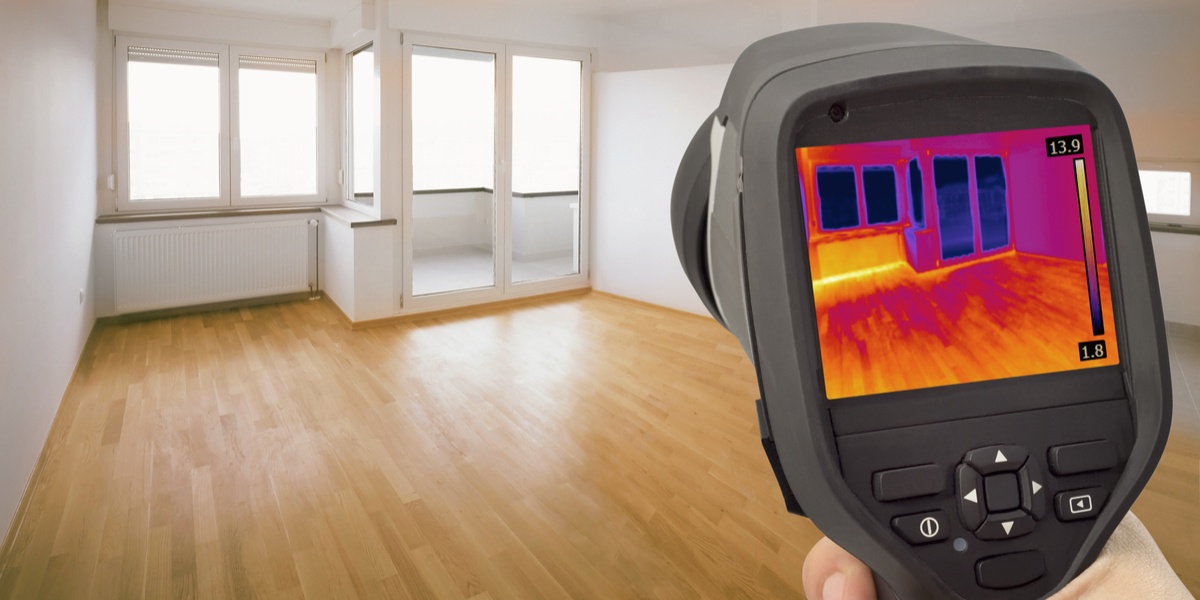Lawrence Berkeley National Laboratory Has Developed Super Efficient Windows

In previous articles, we have discussed that efficient heating and cooling systems by themselves cannot reach the highest savings possible. The building envelope is equally important, since poor insulation and air-tightness increase summer heat gain and winter heat loss. There are many ways to improve the building envelope, but windows have represented a significant challenge due to their transparency. However, Lawrence Berkeley National Laboratory has developed highly efficient windows that can match the thermal performance of walls.
According to the US Department of Energy, heat transfer through windows represents between 25% and 30% of heating and cooling energy use in buildings. The corresponding annual cost is around $50 billion, according to LBNL.
- Single-pane windows provide a very poor thermal barrier, having an R-value of only R1.
- Basic double-pane windows have an R2 rating, thanks to the air gap between both sheets of glass.
- Double-pane windows with low emissivity coatings and an argon-filled gap have an R4 rating, which means they reduce heat transfer by half compared with basic double-pane windows. 90% of all windows currently sold in the US have this construction.
- Low emissivity coatings are used in high performance windows because they block infrared radiation, which carries the most heat, while allowing visible light through.
The windows recently developed by LBNL have an R-value between R8 and R10, using a triple-pane design. While these are not the first triple-pane windows in the market, they bring unique features that had not been implemented before. Compared with existing double-pane ENERGY STAR windows, the new design reduces unwanted heat transfer by 50%.
Households in cold regions of the USA can save between $250 and $750 per year with the super-efficient windows from LBNL. In new constructions, where the windows specified are already efficient in most cases, the savings potential ranges from $100 to $300 per year. Nationwide, LBNL estimates potential savings of $10 billion per year.
Get an energy audit and find the best upgrades for your building.
How Are the New LBNL Windows Assembled?
Compared with other triple-pane windows in the market, the new design from LBNL offers two distinctive features:
- Instead of being filled with argon gas, the window contains krypton, which has superior insulating properties.
- The middle pane is much thinner than the external ones, measuring only 0.7 mm, and this results in the same thickness as a double-pane window. Therefore, these windows can be installed without replacing the sash and frame.
Upgrading to triple-pane windows is normally a very expensive project because existing windows must be replaced completely, including the frame. However, this is no longer necessary with the new design, achieving a higher return on investment and a shorter payback period.
Researchers at LBNL had already designed a first version of the high-efficiency windows in the 1990s. However, it was impossible to produce thin glass sheets at a reasonable cost with the manufacturing technologies of that time. Now that glass manufacturing has evolved to meet the demand of flat-screen TVs and smartphones, triple-pane windows with an ultra-thin middle glass pane are viable.
The first version of the high-efficiency window is optimized to prevent heat loss in climates that are predominantly cold. The next step is to develop versions that are customized for each climate zone, and LBNL has a database of more than 5,000 coatings currently used in windows. Research is also being conducted on electrochromic windows, which change their tint based on sunlight conditions, although these are still held back by a very high cost - they are up to 8 times more expensive than the super-efficient triple pane windows.
Window Selection Tips from the US Department of Energy
The US Department of Energy provides the following recommendations to achieve the best results when purchasing windows:
- Verify that the window is labeled by both ENERGY STAR and the NFRC (National Fenestration Rating Council).
- The R-value is a priority in cold weather, since it describes the window’s resistance to non-solar heat transfer. The higher the R-value, the more heat stays inside.
- The Solar Heat Gain Coefficient (SHGC) is the main metric to consider in hot climate zones, where the priority is preventing solar heating. For the best results, the SHGC should be as low as possible.
- The R-value and SHGC are equally important in mixed climate zones, where there is both a hot season and a cold season.
Note that you may find a U-value or U-factor instead of an R-value. To calculate the R-value, just divide the number 1 by the U-value. For example, if a window has a U-value of 0.25, you can conclude that the R-value is 4 (1 divided by 0.25).
Final Recommendation
You can achieve the best results with building upgrades if you follow a whole-building approach, instead of upgrading different types of equipment in isolation. Building envelope improvements reduce the load on heating and cooling equipment, allowing you specify subsequent equipment upgrades with smaller capacity. In the case of cooling equipment, further load reductions are possible if you combine building envelope upgrades with high-efficiency LED lighting.

Anuj Srivastava
Anuj Srivastava is a principal partner at NY Engineers. He is known for his MEP franchise market knowledge. Anuj is currently leading a team of 100+ MEP/FP engineers and has successfully led over 1500 franchise projects in the US.
Join 15,000+ Fellow Architects and Contractors
Get expert engineering tips straight to your inbox. Subscribe to the NY Engineers Blog below.



